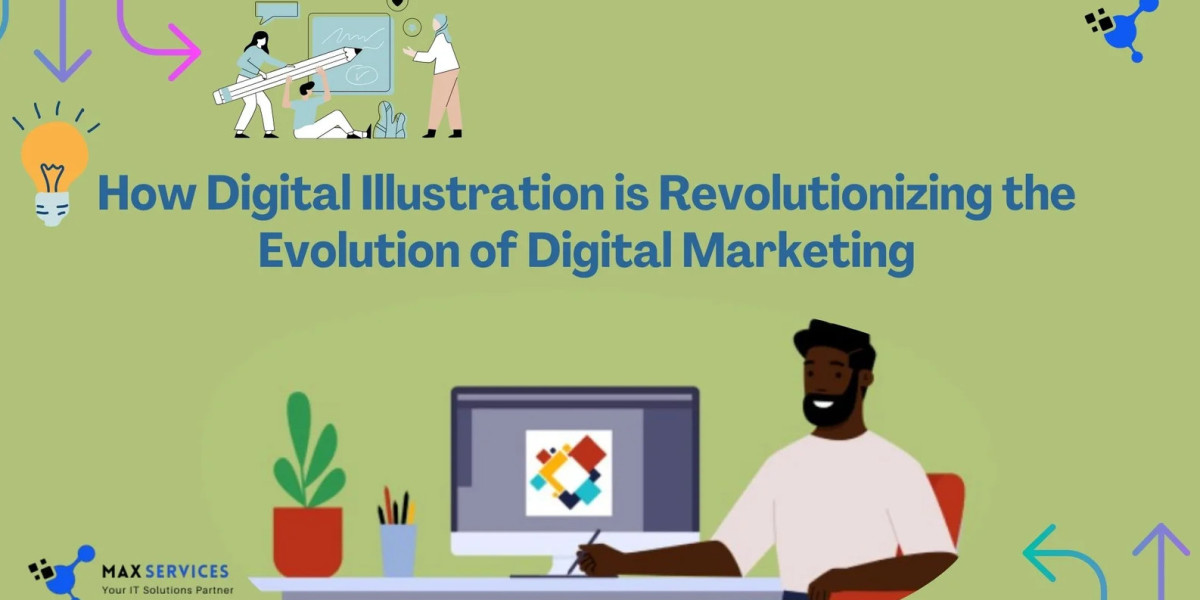The Emergence of Digital Illustration in Marketing: Early Years (1990s - Early 2000s)
During the early stages of digital marketing, websites were predominantly text-based, with limited visual appeal. Digital illustrations played a minimal role, primarily restricted to basic graphics such as icons, logos, and simple web elements due to technological constraints and limited bandwidth.
Basic Graphics and Icons
Web design in the 1990s was rudimentary, with designers focusing on small, low-resolution illustrations to enhance website aesthetics. These illustrations served mainly to break up text-heavy pages and improve user experience without compromising loading times.
Early Design Software: Adobe and Others
The advent of tools like Adobe Photoshop and Illustrator provided designers with the ability to create digital illustrations. However, their functionalities were limited compared to modern design programs. Despite these constraints, these tools laid the groundwork for the digital design industry.
Branding and Visual Identity
Even in its early stages, digital illustration played a role in branding. Companies began incorporating illustrated elements into logos, banner ads, and marketing materials, understanding that a strong visual presence could help differentiate them from competitors.
The Rise of Vector Art and Enhanced Branding (2000s)
The 2000s saw a significant transformation as brands embraced more sophisticated digital illustrations. Vector art became increasingly popular due to its scalability, allowing for sharp and professional designs adaptable to various media formats.
The Advantages of Vector Art
Vector illustrations, created using paths and curves, allowed brands to develop scalable logos and graphics without loss of quality. This advancement enabled the widespread use of custom illustrations across different marketing channels.
Brand Identity Evolution
During this period, companies refined their visual branding through custom-designed logos, mascots, and illustrated elements. Brands like Apple, Pepsi, and Starbucks streamlined their designs to achieve instant recognition across platforms.
The Introduction of Flash and Animation
Flash technology allowed for animated websites and advertisements, introducing dynamic and interactive content to digital marketing. Although Flash eventually became obsolete due to compatibility issues, it paved the way for motion graphics and interactive illustrations.
Motion Graphics and Interactive Content Revolution (2010s)
The 2010s marked a shift toward more dynamic digital illustrations, thanks to technological advancements. Faster internet speeds and the rise of social media platforms encouraged brands to adopt animated and interactive content.
Motion Graphics Integration
With tools like Adobe After Effects, brands leveraged motion graphics to create visually engaging social media ads, explainer videos, and website animations. Animated product demos and tutorials became popular methods for delivering information in an engaging format.
Interactive Digital Illustration
Digital illustrations evolved into interactive experiences, particularly on social media. Brands utilized illustrated characters in games, quizzes, and challenges, encouraging user engagement and participation.
The Rise of Infographics and Data Visualization
Infographics became a powerful marketing tool, blending digital illustration with data to present complex information in an easily digestible format. These illustrated visuals enhanced content marketing strategies and brand credibility.
The Era of Personalization and AI-Driven Illustrations (Late 2010s - 2020s)
As marketing became increasingly data-driven, digital illustrations were tailored to individual preferences and behaviors. Advances in artificial intelligence (AI) and analytics allowed brands to create hyper-personalized visual content.
Illustrated Characters and Storytelling
Brands increasingly used illustrated mascots and characters to establish deeper emotional connections with consumers. These illustrations became central to social media campaigns, video ads, and influencer collaborations.
AI-Generated Custom Illustrations
AI-powered tools like DALL·E and MidJourney enabled the automatic generation of unique illustrations based on specific user inputs. This innovation allowed brands to create personalized content at scale, catering to diverse consumer demographics.
The Impact of AR and VR Technologies
Augmented Reality (AR) and Virtual Reality (VR) further revolutionized digital illustration in marketing. AR filters on social media allowed users to interact with illustrated elements, while VR experiences offered immersive product demonstrations and virtual brand interactions.
The Future of Digital Illustration in Marketing
The continued advancement of AI, immersive technologies, and personalization will drive the future of digital illustration in digital marketing. Brands will leverage generative AI for scalable, customized visuals and explore AR/VR for deeper consumer engagement.
AI-Driven Art and Automation
Generative AI will enable brands to create personalized illustrations efficiently, streamlining content production without compromising quality.
Enhanced Interactive Experiences
Future marketing campaigns will integrate more interactive digital illustrations, providing users with immersive and engaging brand experiences.
Emphasis on Sustainability and Inclusivity
Illustrations will reflect a growing emphasis on diversity, sustainability, and social responsibility, ensuring brands connect authentically with global audiences.
Conclusion
Digital illustration has evolved from basic web graphics to a powerful marketing tool that drives engagement, storytelling, and brand identity. As technology continues to advance, digital illustration will remain at the forefront of digital marketing, shaping how brands interact with consumers in innovative and meaningful ways.







